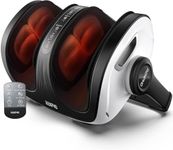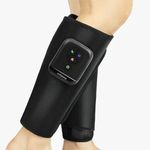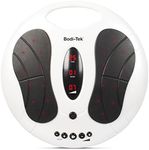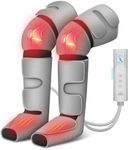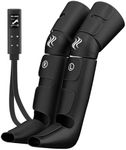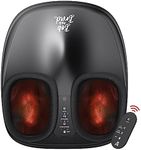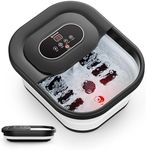Buying Guide for the Best Leg Massagers
Choosing the right leg massager can greatly enhance your relaxation and recovery routine. When selecting a leg massager, it's important to consider your specific needs, such as whether you're looking for relief from muscle soreness, improved circulation, or simply a way to unwind after a long day. Understanding the key specifications will help you make an informed decision that aligns with your personal preferences and health goals.Type of MassagerLeg massagers come in various types, including air compression, shiatsu, and vibration massagers. The type of massager determines the kind of massage experience you'll get. Air compression massagers use airbags to apply pressure, which is great for improving circulation and reducing swelling. Shiatsu massagers use rotating nodes to mimic the kneading and pressure of a human hand, ideal for deep tissue relief. Vibration massagers provide a gentler massage, suitable for relaxation and mild muscle tension. Consider what kind of massage you prefer and what your body needs when choosing the type.
Intensity LevelsIntensity levels refer to the strength of the massage. This is important because it allows you to customize the massage to your comfort level and needs. Massagers typically offer multiple intensity settings, ranging from gentle to strong. If you have sensitive legs or are new to massage, you might prefer a model with lower intensity settings. Conversely, if you're looking for deep muscle relief, higher intensity levels might be more suitable. Think about your pain tolerance and the kind of relief you're seeking when evaluating intensity options.
Heat FunctionThe heat function in a leg massager provides warmth that can enhance relaxation and improve blood flow. This feature is particularly beneficial for soothing sore muscles and joints. Some massagers offer adjustable heat settings, allowing you to control the temperature to your liking. If you often experience cold feet or want to maximize relaxation, a massager with a heat function might be a good choice. Consider whether you would benefit from added warmth during your massage sessions.
Size and PortabilitySize and portability are important if you plan to use the massager in different locations or have limited storage space. Larger massagers may offer more comprehensive coverage but can be bulky and less convenient to move around. Portable models are typically lighter and easier to store, making them ideal for travel or small living spaces. Consider where and how often you'll use the massager to determine the right size and portability for your lifestyle.
Coverage AreaCoverage area refers to the parts of the leg that the massager can target. Some massagers are designed to focus on specific areas like the calves or feet, while others offer full-leg coverage. If you have specific areas of discomfort, such as the calves or thighs, look for a massager that targets those areas. For overall leg relaxation, a model with comprehensive coverage might be more suitable. Assess your needs and any specific areas of tension when considering coverage options.
Control OptionsControl options determine how you interact with the massager. Some models come with remote controls, while others have built-in buttons or even app connectivity. The ease of use can greatly affect your experience, especially if you want to adjust settings during a massage. If you prefer convenience and ease of access, look for a massager with user-friendly controls. Consider how you plan to use the massager and whether you need quick and easy adjustments.

